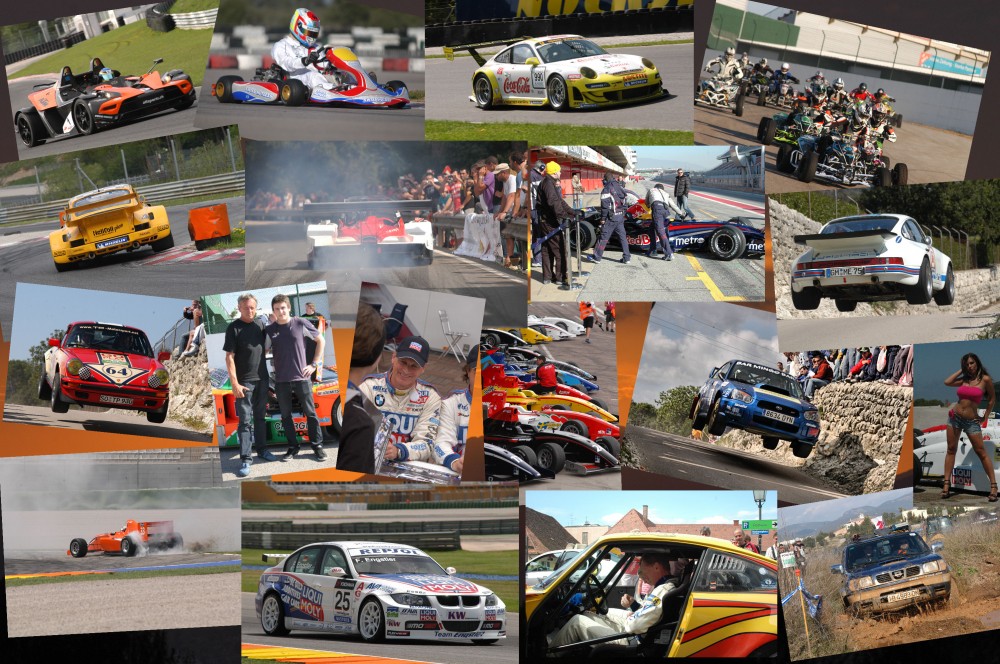Bridgestone Motorsport Jerez Test Summary
Bridgestone Motorsport, the Official Tyre Supplier to the FIA Formula One World Championship, has completed a five day group test at the Circuito de Jerez, Spain, evaluating tyres for the 2009 and 2010 seasons. All four compound designations of 2009 specification dry: hard, medium, soft and super soft; were available for use by the teams, as well as the current specification 2009 wet and extreme weather tyres. A new softer compound wet tyre, designed for use in Monaco, was also used in evaluation for use at other race venues. For 2010, new compounds and constructions were evaluated. Eight teams attended the test, which took place between 1-5 March. As with many of the 2009 pre- season tests, the weather was an influencing factor; rain fell on several days and high winds made data collection difficult. Bridgestones Potenza Formula One tyres will next been seen in use in Barcelona on March 9-12, where ten teams are scheduled to test. Three compounds of 2009 slick tyres will be available for use, as well as the wet and extreme weather tyres. Q&A with Tetsuro Kobayashi Technical Manager, Bridgestone Motorsport: What was learnt from this test? Once more we have  had a test which has been difficult for data collection with temperature changes and a lot of rain and high winds. With many different tyres used we have a lot to analyse, but we have seen no major issues. Teams understand that with so many regulation changes it will take time before they maximise their potential tyre performance, but we have definitely seen good progress. Why were so many different tyres tested in Jerez? Once the season has started we will not have testing like we have had in previous years so we have to make the most of pre and post-season testing. This is why we had many tyre specifications available in Jerez. Why is there such a difference using the wet tyres with the 2009 cars? The 2009 aerodynamic regulations have been designed to decrease the amount of downforce available. In the dry, the lost aerodynamic grip has been partially countered by the greater amount of grip from the slicks and the bigger contact patch they have with the track. In the wet, the aerodynamic situation is the same, but our tyre specifications have not changed since 2008, so this means there is less overall grip in the wet than previously, and the drivers have to adapt their driving accordingly. Can Bridgestone do anything to increase grip levels in the wet? Historically we have used a different wet compound for Monaco, where higher grip is required due to the smooth nature of this track. We have developed a new wet compound for Monaco in 2009, and we are currently evaluating if it is durable enough to take to other circuits to offer more grip. Can you explain the reasoning behind Bridgestones recently announced tyre markings? We will mark the softer of the two compounds available at a race weekend with green bands on the outer edges of the sidewalls. We tested many different alternatives and this location gave the best visibility, from the side and also a head-on view. We have used the colour green as it shows our support of the FIAs Make Cars Green campaign.
had a test which has been difficult for data collection with temperature changes and a lot of rain and high winds. With many different tyres used we have a lot to analyse, but we have seen no major issues. Teams understand that with so many regulation changes it will take time before they maximise their potential tyre performance, but we have definitely seen good progress. Why were so many different tyres tested in Jerez? Once the season has started we will not have testing like we have had in previous years so we have to make the most of pre and post-season testing. This is why we had many tyre specifications available in Jerez. Why is there such a difference using the wet tyres with the 2009 cars? The 2009 aerodynamic regulations have been designed to decrease the amount of downforce available. In the dry, the lost aerodynamic grip has been partially countered by the greater amount of grip from the slicks and the bigger contact patch they have with the track. In the wet, the aerodynamic situation is the same, but our tyre specifications have not changed since 2008, so this means there is less overall grip in the wet than previously, and the drivers have to adapt their driving accordingly. Can Bridgestone do anything to increase grip levels in the wet? Historically we have used a different wet compound for Monaco, where higher grip is required due to the smooth nature of this track. We have developed a new wet compound for Monaco in 2009, and we are currently evaluating if it is durable enough to take to other circuits to offer more grip. Can you explain the reasoning behind Bridgestones recently announced tyre markings? We will mark the softer of the two compounds available at a race weekend with green bands on the outer edges of the sidewalls. We tested many different alternatives and this location gave the best visibility, from the side and also a head-on view. We have used the colour green as it shows our support of the FIAs Make Cars Green campaign.


